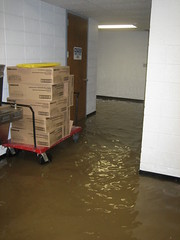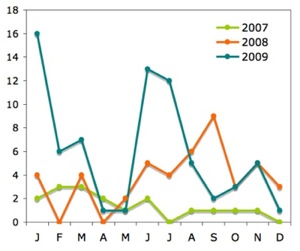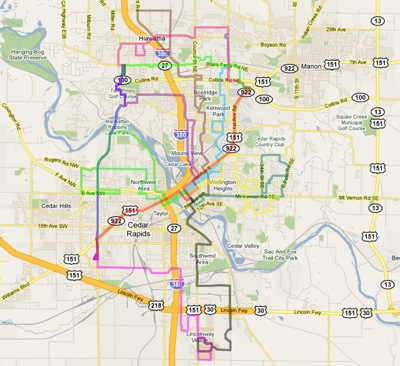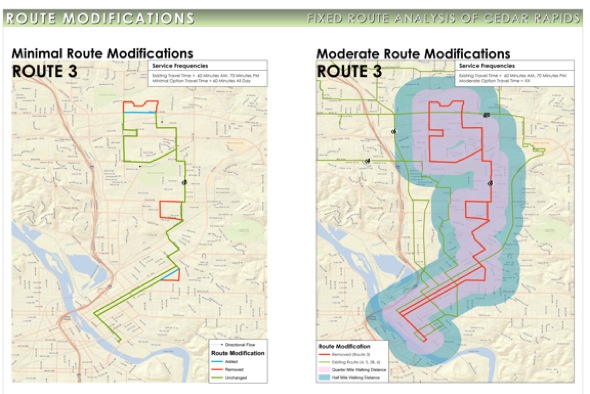It’s been a busy news week in Cedar Rapids regarded the city’s future and upcoming redevelopment.
New City Manager
On Tuesday night the City Council unanimously voted in favor of hiring current West Des Moines City Manager Jeff Pomeranz for the position here in Cedar Rapids. He’s been lauded by the Council and others for the prosperity and growth West Des Moines has experienced for the past several years. Others have raised the important point that, unlike Cedar Rapids, West Des Moines is a suburb that benefits from the larger city and metro of Des Moines, but does not share the same burden of problems associated with the dominant center city.
There have also been grumbles about the method of choosing Pomeranz, which was done mostly out of public sight. I have have no real objections, but think he would’ve been better received by the public if the process had been more transparent. That said, I’m happy the city was able to fill the position with a qualified individual so quickly and look forward to see what he can do. A balance between good public relations, working well with the Council, and professional leadership and management skills will be critical for the success of any city manager.
Fate of the Smokestack
The historic 171 foot tall Sinclair smokestack will no longer be saved. An analysis of the structure concluded over half of if would need to be taken down by hand, brick by brick, to stabilize it before reconstructing and restoring it. This not only increased cost estimates for the restoration work, but also would risk losing FEMA funding for demolition of the Sinclair industrial site because work would need to be halted at this point until the stack is stabilized. The City Council voted to let the smokestack go and will likely be taken down sometime next week as demolition work continues. It is inevitably time for this piece of Cedar Rapids history to come down. While disappointing, I’m glad an effort was at least made to see if it could be reasonably preserved.
TrueNorth + Library
The biggest news this week in downtown redevelopment was the city’s decision to sell the flood-damaged library to TrueNorth to redevelop for their own use. TrueNorth is vacating its current building at 4th Avenue and 5th Street SE, for construction of a new central library. This stirs suspicion among many citizen skeptics that this was a back-room deal between city leaders and TrueNorth. TrueNorth is selling their property to the city for $7.5 million and offered to pay $250,000 for the old library, in addition to a $10,000 per month lease fee to the city for up to 15 months to stay in its current building while the library is being renovated for the company.
Two other offers were submitted to the city. Intermec (by way of a separate buyer) offered $350,000 for the library, with plans to relocate from their current building across the street. A third offer from Jody Keener of J.K. Properties LLC proposed turning the old library into a toy museum and retail outlet. (I don’t think anyone saw that one coming)
The city calculated the financial tax impact each proposal would have on the city over ten years and determined TrueNorth would provide the most at $1.26 million, Intermec $924,000, and the toy museum, unsurprisingly, only $84,000 (assuming it lasted that long). Additionally TrueNorth said it will invest a minimum of $7.5 million in the building and retain 120 jobs and create 50 new jobs in the future. The Dummermuth family, which intended to purchased and lease the library to Intermec, planned to reinvest $3.8 million in the building and an additional $2.2 million in furniture and equipment. Intermec would retain 252 high-paying jobs downtown.
Now that the decision is made, design and construction work can commence to renovate the former library into an office building to fit the needs of TrueNorth. We will likely see much of the ground floor converted to parking and the second level expanded across the entire building footprint. TrueNorth evidently has suggested they might also have room in the old library for Intermec. To accommodate both companies, considering the current spaces they each occupy, I imagine the library would need to be expanded even more – perhaps even a third story. This is of course all speculation on my part, but if they work together this could turn out to be a very interesting transformation.
Mexican in NewBo
The owner of Papa Juan’s/Stefano’s in northeast Cedar Rapids wants to open another Mexican restaurant at the former Brosh Funeral Home and Chapel at 10th Ave and 3rd Street SE in New Bohemia, but technicalities about part of the building’s historical status will determine if they can. Without a “contributing” historical status they can not benefit from historic tax credits and would be required to raise the building above the flood level. If it goes their way plans are to invest $900,000 in renovations and be open for business within four months of obtaining permits. The effort seem like a far stretch, but having another restaurant – and occupied building – in that area would be great. Read more here
Army Corps’ Flood Protection Feasibility Study
The results emerging from the Army Corps of Engineers’ feasibility study for a flood protection system along the Cedar River in Cedar Rapids are not looking good. The City and the Corps had a public open house today at the Crowne Plaza to present the current status and process of the study and preliminary alternatives they are coming up with. A flood protection system considered economically feasible by the Army Corps of Engineers would only protect the east bank and involve a permanent flood wall in front of downtown.
This plan stands in stark contrast to the City’s preferred plan which includes an extensive combination of earth levys on the west side and away from downtown, permanent walls by industries, and sections of removable flood walls by downtown, Czech Village, and a few access points along the proposed northwest greenway. Cedar Rapids will most certainly need to compromise on the preferred plan if any system is to ever actually get funded and built, but if the Army Corps’ proposed half-protection system is the best we can [maybe] get, it begs the question if it is even worth it. As of now the City is still pushing to get the funding for the comprehensive flood protection system that will maintain a connection between downtown and the river, and provide protection for the west side as well. More information about the system and the city’s preferred plan can be found here. Also check out another post about the flood protection system at Urban Corridor.






